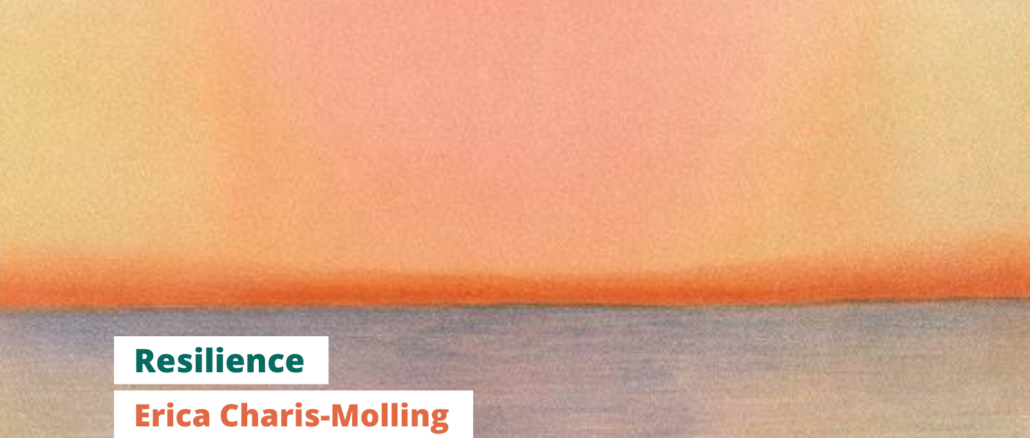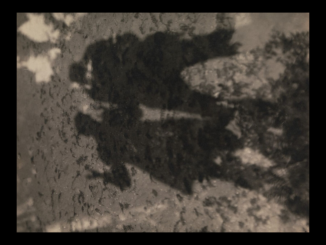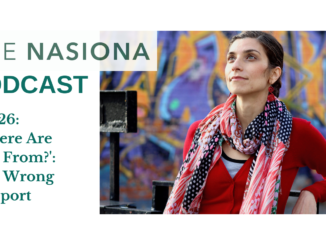
In a church that believed in faith healing, people prayed over my body almost weekly. As a closeted lesbian in the evangelical church with a knee that I hadn’t been able to walk on for months, if one part of me didn’t need prayer, I requested it for the other. As a regular part of the Vineyard church service, the broken were asked to file to the chapel, a small room off of the back of the sanctuary. It wasn’t a short walk—longer as I limped—but I hustled as best I could, in part from shame and in part to beat the crowds. There were always so many of us with something that needed to be healed.
Resilience (n.) from the Latin roots for “back” (re-) and the verb “to jump or leap” (salire), meaning to bounce back, to return to original size and shape.
I hadn’t grown up in a “signs and wonders” sort of church. I’d been raised in a moderate strain of Lutheranism. It wasn’t until my late teens that I found my way into more charismatic and socially conservative churches. Through their bible studies and accountability partners, I found the tools I needed for my re-closeting efforts, after a messy and painful first attempt to come out to my family. With the church’s help, I could keep my behavior in check while I outgrew this “phase” of lesbianism. From Orthodox to Southern Baptist, each new system equipped me with the fear, shame, and boundaries I needed to distance myself from my sexual desires for other women. It wasn’t until the Vineyard that I encountered a church that claimed it could heal me.
In physical science, the ability to take compressive stress, deform, and then reform. Like a foam stress ball, crushed and then returning to the same shape in your hand.
Healing prayer first involved confession. Then the intercessor asked if they could touch the broken part, in the belief that the power of the prayer could be amplified through the “laying on of hands.” When I told them about my knee, they would place their hands gently-but-firmly on the joint and summon the supernatural repeatedly saying “come Lord Jesus, come Holy Spirit, come, come, come…” When I told them about my recurring desire for women, they would place an awkward hand on my shoulder, my apparent vulva by proxy. I tried desperately to think about anything except what was between my legs as they chanted “come, come, come.” As they prayed, I would imagine the warmth under their hands (or in less comfortable places their hands didn’t go) as healing power pouring into my body.
Foam, rubber, animal tissue. Flesh, which when struck with force, springs back at the site of the assault. Obsolete definition: to recoil
When prayer and physical therapy didn’t work, I found myself sitting on the examination table for a pre-op appointment. At 34 years old, the doctors agreed I was too young for a knee replacement. In fact, I was also “too young” to have a joint completely immobilized by osteoarthritis. Yet here we were. The surgeon proposed a cocktail of procedures that he hoped would give me full, athletic mobility back. The walls of his office were covered in pictures of athletes, signed with expressions of gratitude which vouched for his promises. When he asked me if I could take two weeks off from work, I’d imagined myself walking fifteen days later. After all, he noted, my triathlete body was in great shape for recovery.
Presence or absence is measured by a test. The tensile toughness of an object is measured by striking it with a weighted pendulum.
The real world I awoke to post-surgery was entirely different. I spent the two weeks off work flat on my back with my leg in a machine that slowly bent and straightened my leg for eight hours a day. By day fifteen, stir-crazy and behind my unrealistic recovery timeline, the offer of crutches seemed like a godsend. I discovered, to my deep disappointment, that the effort of using them exhausted me. Yet I was determined to go back to work. Bullishly I pushed through my hour-long bus commute, but by the time I arrived, I needed a nap. Early recovery didn’t look like heading back to the gym. It looked like barely making it to my office chair. I would be in PT for a full year before I could walk without a hitch and take stairs foot over foot. When I finally resumed athletic training, I couldn’t help but focus on what I couldn’t do or how much faster I used to be able to do it.
Toughness is a value, a measure of how much a material can take. How much violence can it absorb before rupturing?
When prayer didn’t work to heal my sexual orientation either, I found myself sitting on the comfy couch of a cozy therapist’s office. In the aftermath of realizing my attraction to women was incurable, I knew I needed to accept myself before my self-hatred swallowed me whole. Yet I was determined to keep the rest of my identity intact. I came out to my husband with no intention of divorcing him. My husband and I opted to try an open relationship to make our new reality work. I worried about the church’s willingness to stand by us in that decision—the more canonical compromise being lifelong celibacy. But I rationalized that the folks at church cared for us, some of them deeply. I convinced myself they would come around. I came out to the folks in my church, continuing to attend every Sunday.
Science swings its carefully calculated wrecking ball and after repeated blows, those able to return to their shape are awarded a number in joules.
In the end, the open marriage failed dismally. And continued attendance at a church that couldn’t affirm me only fed what remained of my internalized shame. My worst fears about coming out of the closet came true: my husband moved out of our condo to an apartment across town and, for my own sanity, I walked away from the church and a decade-worth of friendships. Yet the fear that leaving the church might mean leaving my faith as well drove me to immediately begin visiting other churches. The only way to prove to myself and my former-church folks that my lesbianism wasn’t the soul-destroying force some claimed was for my faith to survive. I needed to emerge on the other side of the messy, complex, life-altering process of “coming out” unscathed and whole.
Trauma: the experience or witness of actual or threatened death, or perceived threat of injury to self or others. Losing faith is a death of one’s self and one’s reality–leaving religion carries with it a threat to one’s soul.
Letting go, first of my marriage of nearly fifteen years and then of the church I’d called my second home for a decade, felt like failure. Worse still, I found myself in the pew of an open and affirming church, unable to feel God the way I used to when I prayed. What was wrong with me, that my faith didn’t bounce back in this less hostile environment? Were the small-minded believers right—had being a lesbian actually robbed me of my relationship with God? Weeks passed, then months, then a year. When I finally heard the phrase “religious trauma” for the first time, I immediately recognized myself. I stopped going to church and I felt like I could breathe again.
And the lie is that I survived because parts of me didn’t.
~ “Everything will hurt for a while” by Ruth Awad
There’s a necessary grief required in becoming someone, some new body. With my knee’s limitations, I’ve had to let go of any Ironwoman aspirations I’d once indulged. I had to grieve all the placement podiums I’ll never stand on. I had to bury the self-conception of my body as a thing that will always bounce back. First post-surgery and then post-church, I saw the dark side of my desperate belief in my own resilience. The all-or-nothing survival of my old self actively blocked the emergence of anything new, fighting it like an antibody.
Eventually what I’d grieved like a death of self started to feel like life. There was an openness in me to the world, to what I believed about it, and what was possible for me in it. By making resilience a goal, it became a measurement of successful survival. I’d needed my faith in the possibility of restoration to help me survive, but holding myself to that standard afterward would keep me from becoming who I needed to be next. Now, as I let that go too, I’m free to find my way into a different size and shape. Me and also not me, but still here. I reach out and place my hand on my knee, feeling the warmth of my own fingers. Yes, I’m still here.
Erica Charis-Molling
Erica Charis-Molling is a poet, educator, and librarian. Her writing has been published in literary journals including Vinyl, Entropy, and Mezzo Cammin and is forthcoming in Redivider and Tinderbox. She’s an alum of the Bread Loaf Writers’ Conference and received her M.F.A. in Creative Writing from Antioch University. She currently lives in Boston and works as Education Director for Mass Poetry.
Featured image: Pechuël-Loesche, “Studies on Twilight Phenomena, after Krakatoa (1888),” The Public Domain Review.



1 Trackback / Pingback
Comments are closed.